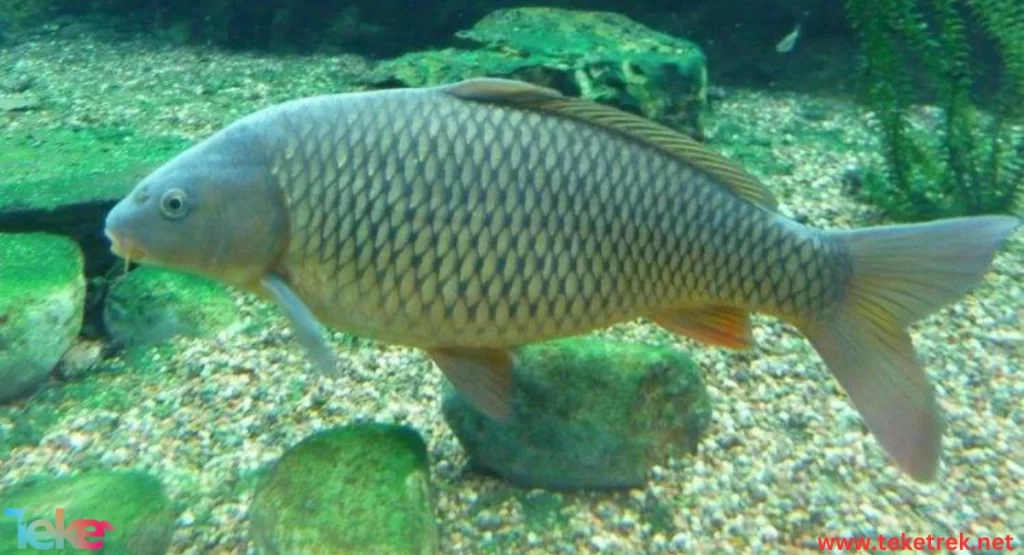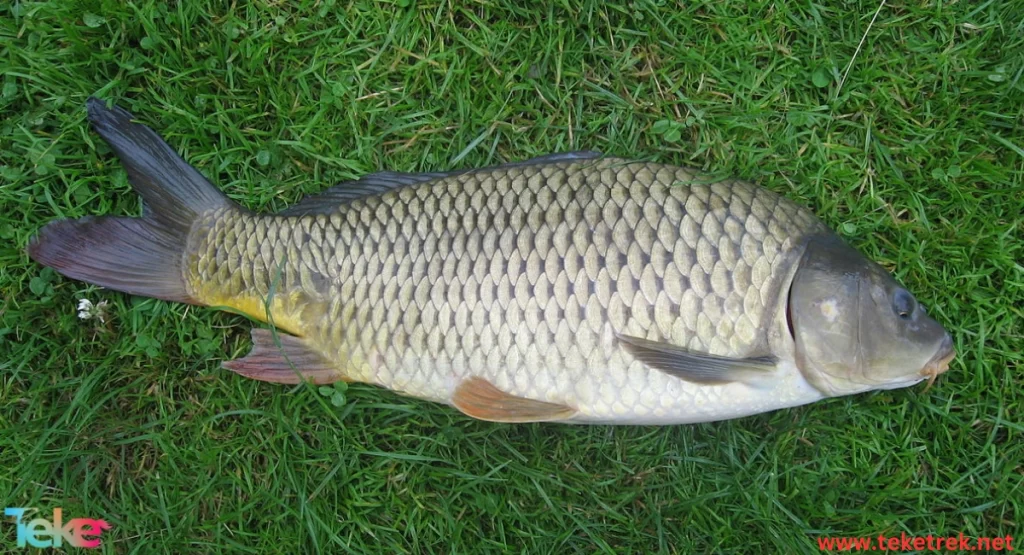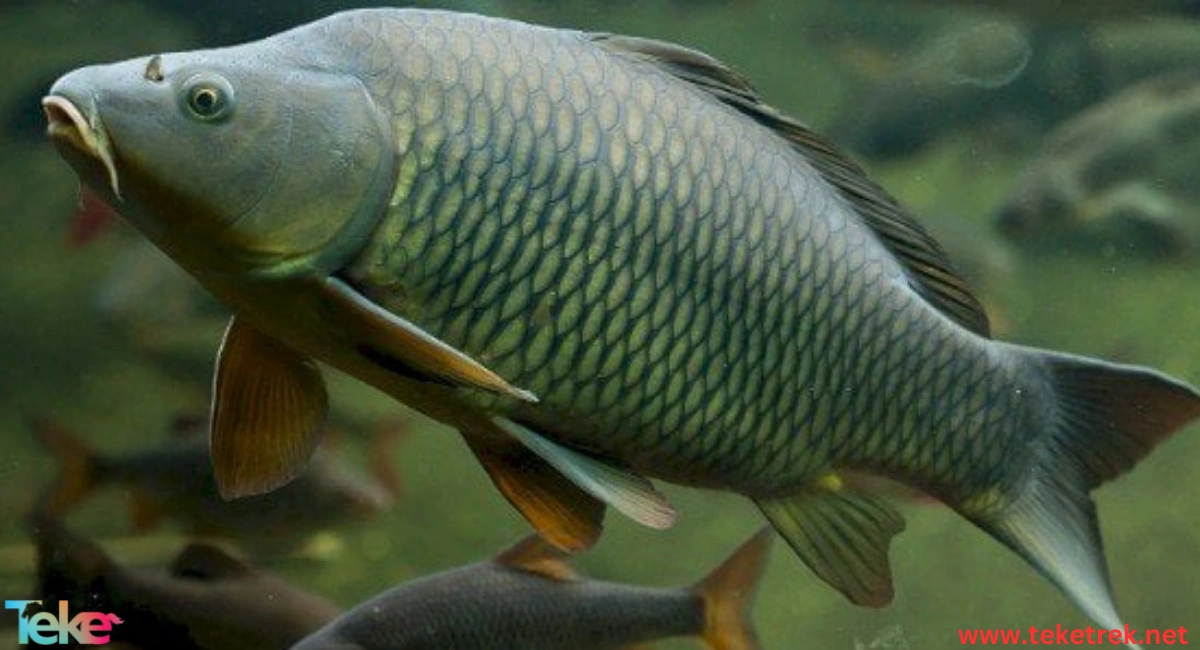Carp is considered one of the somewhat large types of fish. Today on the Trektrek we will talk about it, what it is, what it looks like, its types, where it lives, how it reproduces and feeds, and I will list for you the most important interesting facts about it.

About carp
Carp are large, bold, and slow-moving fish that like to live in warm waters rich in grasses and crustaceans.
- It is called mabrouk in some Arab countries.
- Although carp are found in fresh water, they are sometimes found in brackish waters such as the Baltic Sea.
- Carp fish tolerate temperature changes and some amount of pollution.
- Carp live throughout Asia, Europe, and North America.
Carp shape
Carp has morphological characteristics that distinguish it from other fish. These morphological characteristics are as follows:
- The carp has a stocky and large body, and also has a rounded nose with a short tip.
- The carp is relatively large in appearance and has a very long back.
- The fish also has a medium-sized tail at the end of its back, and it does not have teeth.
- At the beginning of the fish’s back, there is a serrated spine. The upper jaw extends beyond the fish’s lower jaw by a not very large distance.
- The carp also has two pairs of whiskers located on the side of the mouth.
- The famous color of carp is golden, and there are a number of species that have a brown color and others that have a green color.
Carp habitats
Carp are distributed in Asia, Europe, and North America according to their species. They are found in fresh water, but sometimes they live in brackish waters, such as the Baltic Sea.
- Goldfish live in China.
- Common carp is found in Europe and Asia.
- Herbivorous carp in East Asia.
- Koi carp live in Japanese ponds.
Types of carp
There is no specific number of carp species, but there are well-known and common species:
- Goldfish: A wild carp that lives in China. It is actually a member of the genus Carassius, but due to artificial selection, it has been altered and bred to have a more realistic appearance to the human eye. This species first came to Europe.
- Common carp: from the waterways of Europe and Asia, and has different colors: green, white, black.
- Koi Fish: With the koi fish’s unique patterns of bright orange or black markings all over its white body, koi became very popular in Japanese ponds and water gardens and then became famous in the rest of the world from there. It’s actually a different type of carp.
- Grass carp: Grass carp originated in East Asia. They are a family of herbivorous fish with a long, torpedo-like body. Grass carp consume up to three times their body weight in food daily, and they grow very quickly.
Carp food
Carp is an omnivorous fish that digs dirt at the bottom of the water in search of aquatic plants and insects, as well as crustaceans, worms, and zooplankton.
Reproduction in carp
Spawning occurs at the beginning of summer, then the female lays her eggs under water and on plants, then they stick together to form masses.
- The number of eggs may reach three hundred thousand eggs during the breeding season.
- The hatching period is four days.
- The life cycle of a fish is approximately seven months, from the beginning of the fish laying its eggs in May until it reaches its final fish form in November.


Interesting facts about carp
Carp has several benefits, which are represented in the following items:
- Carp is considered one of the types of fish that contains iodine, which is very important for the blood.
- Carp contains vitamin D and also vitamin A, especially in the liver.
- Carp strengthens teeth, blood and bones.
- This type of fish also improves psychological and mood.
- Carp helps the fetus grow inside the mother’s belly, which is why pregnant women should eat it.
- In addition, it helps lower blood pressure and helps get rid of rheumatism.
- It works to get rid of eye diseases and is a good pacemaker.
FAQ
One of the most common questions about carp:
- What is carp?
A type of fish that lives in water. The size of the carp varies depending on the type, age, and environment.
- Is carp a carp?
Yes, carp is a type of carp.
- What does carp feed on?
Carp feed on a variety of foods such as algae, grasses, insects, molluscs and small fish.
- How do carp reproduce?
Carp reproduce by laying eggs, as spawning occurs at the beginning of the summer, and they may lay about three hundred thousand eggs during the breeding period.
- Where do carp live?
Carp are distributed in Asia, Europe, and North America according to their species. They are found in fresh water, but sometimes they live in brackish waters, such as the Baltic Sea.
- Are carp catfish?
Carp are not catfish; they belong to the Cyprinidae family, while catfish belong to different orders.
- What is carp fish used for?
Carp fish is primarily used for food, often consumed in various cultures for its taste and affordability.
- What countries eat carp?
Carp is eaten in many countries around the world.
In short, carp is a carnivorous animal that reproduces by spawning and has several species, each of which lives in a different place from the other.






